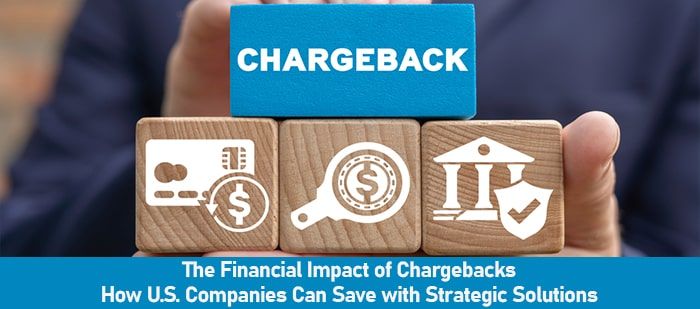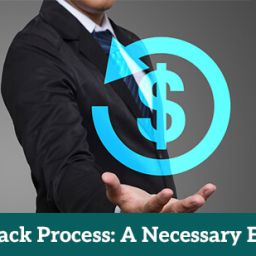
Chargebacks have become a significant concern for U.S. companies, impacting not only their bottom lines but also their reputations and customer relationships. As consumers increasingly turn to digital payment methods. The frequency of disputes has surged. Leading to substantial financial losses for businesses across various sectors.
However, companies can turn the tide by adopting strategic chargeback solutions that not only mitigate these losses but also enhance operational efficiency. By implementing proactive measures such as improved transaction monitoring, robust customer service protocols, and effective communication channels, businesses can significantly reduce the incidence of chargebacks.
Moreover, understanding the underlying reasons behind chargebacks allows companies to tailor their approaches, ultimately leading to financial savings. In this blog post, we will explore the financial impact of chargebacks and delve into actionable strategies that can help U.S. companies safeguard their revenues and build stronger customer trust.
Understanding the Financial Burden of Chargebacks on U.S. Companies
Chargebacks can create a ripple effect of financial repercussions for U.S. companies. Each chargeback involves not just the return of the transaction amount but also additional fees imposed by banks and payment processors. Which can range from $20 to $100 per incident.
These costs quickly accumulate, especially for businesses that experience frequent disputes. Beyond direct financial losses, companies also face indirect costs such as administrative expenses associated with managing disputes and the potential for increased merchant account fees or even account termination if chargeback ratios become too high.
Additionally, high chargeback rates can damage a company’s relationship with payment processors, leading to stricter terms or higher processing fees. Moreover, the time and resources dedicated to handling chargebacks divert attention from core business activities, affecting overall productivity and profitability. The cumulative financial impact underscores the importance of implementing effective chargeback management strategies to protect a company’s bottom line.
Some Related Blogs
- Top Chargeback Management Solutions for U.S. Merchants in 2024
- How Payment Authentication Mitigates Chargeback Risks
- How U.S. Enterprises Can Combat Chargeback Fraud with Advanced Payment Technologies
- The Impact of Credit Card Chargeback Laws on Online Shopping
Identifying Common Causes of Chargebacks and How to Address Them
Identifying the common causes of chargebacks is the first step in formulating effective strategies to mitigate them. Among the most prevalent reasons for chargebacks are fraudulent transactions. Where unauthorized individuals use stolen payment information to make purchases.
This type of fraud can be combated by deploying advanced fraud detection systems and implementing multi-factor authentication during the checkout process. Another frequent cause is customer dissatisfaction, often stemming from issues such as receiving damaged goods, incorrect items, or delays in shipping.
Addressing this involves maintaining high standards in product quality, ensuring accurate order fulfillment, and providing transparent shipping information. Additionally, poor customer service can escalate minor issues into disputes; thus, investing in robust customer support can preempt many chargebacks.
Miscommunication or lack of clarity about billing descriptors also contributes to chargebacks. As customers might not recognize charges on their statements and initiate disputes. Ensuring clear and recognizable billing descriptors can reduce confusion and prevent unnecessary chargebacks. By pinpointing these common causes, businesses can adopt targeted measures that not only resolve the immediate issues but also contribute to long-term financial savings by reducing chargeback incidents.
Implementing Fraud Prevention Measures to Reduce Chargeback Rates
Fraud prevention is a critical component in reducing chargeback rates for U.S. companies. Deploying advanced fraud detection technologies. Such as machine learning algorithms, can help identify and flag suspicious transactions in real time.
These systems analyze transaction data for patterns indicative of fraudulent activity. Aallowing businesses to intervene before a chargeback occurs. Incorporating multi-factor authentication (MFA) adds an additional layer of security by requiring users to verify their identities through multiple channels. Such as a password and a text message code.
![]()
Email us anytime!
Email customer service 24/7
![]()
Call us anytime!
Reach customer care 24/7 at +1 (888) 901-8653
Tokenization, which replaces sensitive payment information with unique identifiers, further minimizes the risk of data breaches. Additionally, maintaining up-to-date security protocols like EMV chip technology and PCI-DSS compliance ensures that companies meet industry standards for data protection.
Educating customers about safe online shopping practices and how to recognize phishing attempts can also reduce the incidence of fraudulent transactions. By integrating these fraud prevention measures, businesses can effectively safeguard themselves against unauthorized purchases and the resultant chargebacks.
Enhancing Customer Communication to Prevent Disputes
Effective customer communication is pivotal in preventing disputes that lead to chargebacks. Clear, transparent, and timely communication with customers helps set the right expectations and fosters trust. Providing detailed product descriptions, high-quality images, and accurate delivery timelines can minimize misunderstandings that often result in disputes.
Additionally, sending automated notifications about order status, including confirmation, shipment, and delivery updates, keeps customers informed and reduces anxiety about their purchases.
Customer service plays a crucial role in this equation. Offering multiple channels for customer support. Such as phone, email, and live chat, ensures that customers can easily reach out with any issues or questions. Promptly addressing concerns and providing satisfactory resolutions can prevent minor issues from escalating into chargebacks. Implementing a comprehensive FAQ section on your website can also preempt common queries and reduce the need for direct support.
Furthermore, post-purchase follow-ups can be instrumental. Sending surveys or feedback requests after a transaction allows customers to voice any dissatisfaction directly to the business rather than resorting to a dispute. These follow-ups can also highlight potential areas of improvement in your service or product offerings. By prioritizing effective communication. Businesses can significantly lower the likelihood of chargebacks stemming from customer dissatisfaction.





